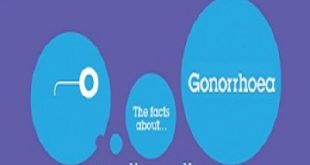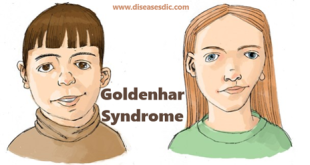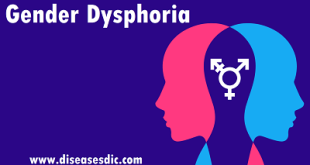Definition of Guillain Barre syndrome
Guillain Barre syndrome (GBS) is a rare neurological disorder in which the body’s immune system mistakenly attacks part of its peripheral nervous system the network of nerves located outside of the brain and spinal cord. GBS can range from a very mild case with a brief weakness to nearly devastating paralysis, leaving the person unable to breathe independently. Fortunately, most people eventually recover from even the most severe cases of GBS. After recovery, some people will continue to have some degree of weakness.
Guillain-Barré syndrome can affect anyone. It can strike at any age (although it is more frequent in adults and older people) and both sexes are equally prone to the disorder. GBS is estimated to affect about one person in 100,000 each year.
Epidemiology
The estimated overall annual incidence of GBS in the United States is 1.65 to 1.79 per 100,000 persons. The incidence increases steadily from 0.62 per 100,000 persons in those younger than nine years to 2.66 per 100,000 persons in those 80 to 89 years of age. The male-to-female ratio is 3:2.
Types of Guillain Barre syndrome
Once thought to be a single disorder, Guillain-Barre syndrome is now known to occur in several forms. The main types are:
Acute inflammatory demyelinating polyradiculoneuropathy (AIDP)- The most common form in the U.S. The most common sign of AIDP is muscle weakness that starts in the lower part of your body and spreads upward.
Miller Fisher syndrome (MFS)- In which paralysis starts in the eyes. MFS is also associated with unsteady gait. MFS occurs in about 5 percent of people with Guillain-Barre syndrome in the U.S. but is more common in Asia.
Acute motor axonal neuropathy (AMAN) and acute motor-sensory axonal neuropathy (AMSAN) are less common in the U.S. But AMAN and AMSAN are more frequent in China, Japan and Mexico.
Risk factors
Guillain-Barre syndrome can affect all age groups. But you’re at slightly greater risk if:
- You’re a man
- You’re a young adult
Guillain-Barre syndrome may be triggered by:
- Most commonly, infection with campylobacter, a type of bacteria often found in undercooked poultry
- Influenza virus
- Cytomegalovirus
- Epstein-Barr virus
- Zika virus
- Hepatitis A, B, C and E
- HIV, the virus that causes AIDS
- Mycoplasma pneumonia
- Surgery
- Hodgkin’s lymphoma
- Rarely, influenza vaccinations or childhood vaccinations
Causes of Guillain Barre syndrome
Though the exact cause of Guillain-Barre syndrome is not known, this condition usually occurs days or weeks after a respiratory or digestive tract infection. Rarely, recent surgery or immunization can give rise to Guillain-Barre syndrome. Of late, some cases have been reported following infection with the Zika virus.
Our immune system usually fights against only invading organisms, but in Guillain-Barre syndrome our immune system will start attacking our nerves. In Acute inflammatory demyelinating polyradiculoneuropathy (AIDP), the most common subtype of this condition, the nerves’ protective covering (myelin sheath) is damaged. Due to this, nerves won’t be able to transmit signals to the brain, leading to numbness weakness or paralysis.
Guillain-Barre syndrome affects people across age groups, but you are at slightly greater risk if you are a man or a young adult.
The following are the triggers of this disorder.
- Most commonly, infection with campylobacter, a type of bacteria often found in undercooked poultry
- Influenza virus
- Cytomegalovirus
- Epstein-Barr virus
- Zika virus
- Hepatitis A, B, C and E
- HIV, the virus that causes AIDS
- Mycoplasma pneumonia
- Surgery
- Hodgkin’s lymphoma
- Rarely, influenza vaccinations or childhood vaccinations
Symptoms
The symptoms of Guillain-Barré syndrome include:
- Muscle weakness and paralysis affecting both sides of the body
- Jerky, uncoordinated movements
- Numbness
- Muscle aches, pains or cramps
- Odd sensations such as vibrations, buzzing or ‘crawling’ under the skin
- Blurred vision
- Dizziness
- Breathing problems
The symptoms typically start in the feet or legs and progress up the body. Sometimes, the symptoms start in the arms and progress downwards. Symptoms may take a few days or weeks to progress. After the symptoms remain steady and peaked for a short time, the person starts to recover. Recovery may take six months to two years or more.
Guillain Barre syndrome Complications
Guillain-Barré affects your nerves. The weakness and paralysis that occurs can affect multiple parts of your body.
Complications may include difficulty breathing when the paralysis or weakness spreads to muscles that control breathing. You may need a machine called a respirator to help you breathe if this occurs.
Complications can also include:
- Lingering weakness, numbness, or other odd sensations even after recovery
- Heart or blood pressure problems
- Pain
- Slow bowel or bladder function
- Blood clots and bedsores due to paralysis
Diagnosis and test
Patient history is important in the diagnosis of Guillain-Barré syndrome. The progression of ascending paralysis is a typical presentation. About 50% of cases also include a history of a recent infection or illness like a sore throat, a cold, the flu, or diarrhea. Several tests are commonly used to diagnose or confirm the disease and, sometimes, to monitor recovery.
Cerebrospinal fluid (CSF) analysis- To identify the presence of increased protein and white blood cells; for this test, a needle is inserted into the spine between vertebrae and a small amount of fluid is withdrawn. While some protein is normally present, an increased amount without an increase in the white blood cells in the CSF may be indicative of Guillain-Barré syndrome.
Nerve conduction velocity- Tests the speed at which impulses travel through a nerve; the nerve conduction velocity test uses electrodes placed on the skin over peripheral nerves and measures the amount of time it takes for an impulse to travel between electrodes.
Electromyography (EMG)- Measures the electrical activity of muscles fibers; the EMG test measures the electrical activity within muscle fibers by placing a needle electrode through the skin directly into the muscle and measuring the electrical activity of that muscle. It is usually done in conjunction with a nerve conduction velocity test.
There are several variants of GBS that are associated with specific signs and symptoms and with the production of different types of antibodies directed against gangliosides. Rarely, ganglioside autoantibody tests may be ordered.
Another testing may be performed to help distinguish GBS from other causes of weakness, neuropathy, and immune dysfunction and to monitor the person’s health status during illness and recovery.
Treatment and medications
There is no cure for Guillain-Barré syndrome. Treatment is largely supportive and aims to minimize symptoms and prevent complications. Hospitalization is usually necessary for the initial stages, as the course of the condition can be unpredictable. A healthcare team involving doctors, nurses, occupational therapists, and physiotherapists will be involved in treatment.
In mild cases rest is important. However, gentle exercises to prevent joints from becoming stiff and painful will be recommended. Medications to reduce pain may be required. When the condition is more severe the goal of treatment is to:
- Maintain breathing
- Reduce pain
- Maximize muscle strength
- Maximize joint movement
- Prevent complications of paralysis such as contractures (the shortening and thickening of tendons)
Blood pressure, fluid balance, and heart rate and rhythm will also be closely monitored.
Plasma exchange (plasmapheresis)
This treatment involves removing some blood through a needle in the arm or hand. The blood is then separated into plasma and red blood cells. The plasma is discarded and the red blood cells are returned to the body with donated or “clean” plasma. This process may be repeated several times per day over a period of several days. It is thought that plasmapheresis removes antibodies from the body’s plasma that may be aiding the autoimmune attack on the nervous system.
Immunoglobulin (gamma globulin) therapy
This is a special protein used naturally by the immune system. When given in high doses intravenously (through a drip into the bloodstream) it is thought to help reduce the autoimmune attack on the nervous system.
Prevention of Guillain Barre syndrome
Primary prevention
- Guillain-Barré syndrome is a condition (not a disease itself), and its causation is not known exactly. Therefore no specific preventive measure can be indicated.
- Sometimes vaccination may trigger the occurrence of GBS; hence vaccination is not suggested in the acute phase and up to a period of one year after an episode of GBS.
- As there is an increase in cases of Guillain-Barré syndrome in areas where Zika virus is circulating and researchers are investigating to prove the link between the two, WHO recommends that anyone living in or traveling to areas where the Zika virus is circulating take precautions to avoid mosquito bites.
Secondary prevention
When possible, patients should be treated in an intensive care unit in order to keep continuous monitoring and to respond immediately to any urgency. Thus complications due to disease and immobility can be identified and responded early by healthcare workers.
Patients of Guillain-Barré syndrome suffer not only physical difficulties but emotionally painful periods also. Residual symptoms may lead to long term disability and cause difficulties in attaining prior lifestyle or occupation. Rehabilitation services combined with psychological counseling would be helpful in the recovery of the patients.
 Diseases Treatments Dictionary This is complete solution to read all diseases treatments Which covers Prevention, Causes, Symptoms, Medical Terms, Drugs, Prescription, Natural Remedies with cures and Treatments. Most of the common diseases were listed in names, split with categories.
Diseases Treatments Dictionary This is complete solution to read all diseases treatments Which covers Prevention, Causes, Symptoms, Medical Terms, Drugs, Prescription, Natural Remedies with cures and Treatments. Most of the common diseases were listed in names, split with categories.








I have tried Acupuncture treatment for one GBS patient Though slow the results were encouraging But since treatment is longer patient lost his interest in spite of better results
I’ve suffered Gbs on the 16 November 2016 & have recovered fully now. Mentally you need to be very strong as it is draining.
I’m suffering from gbs from last December and now completed treatment but still I’m not able to walk properly give me suggestions please
Please consult a doctor again.